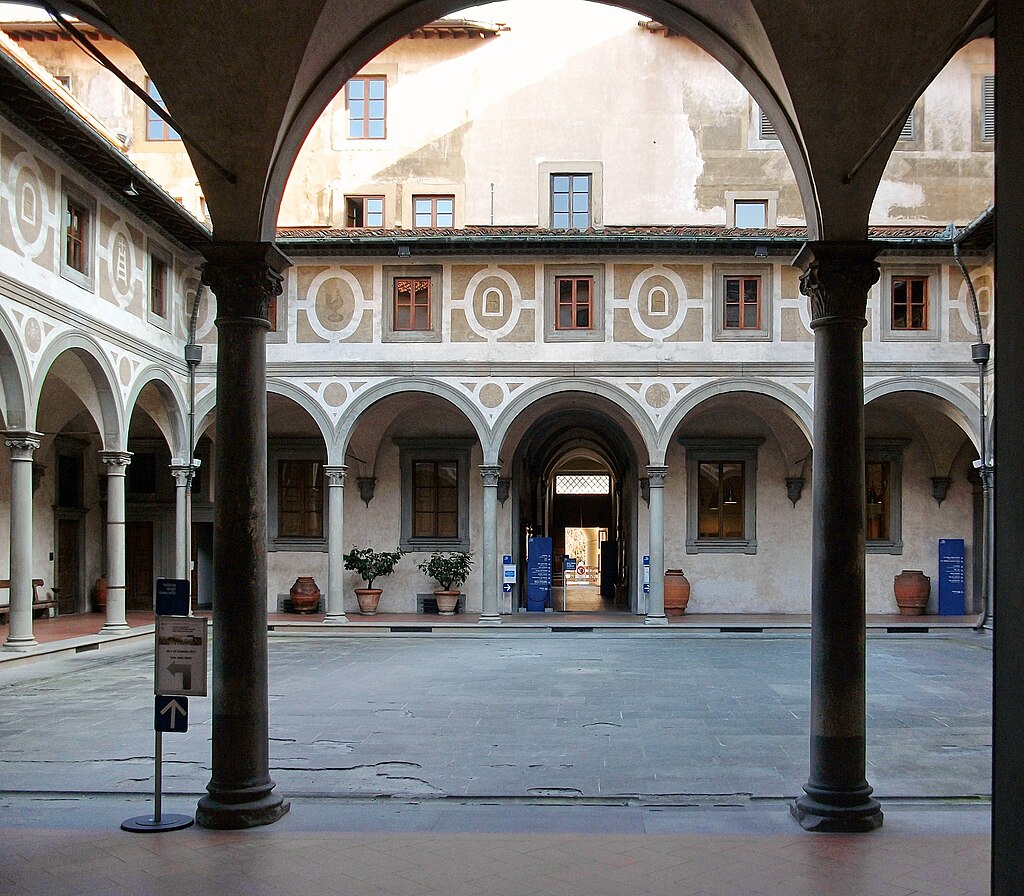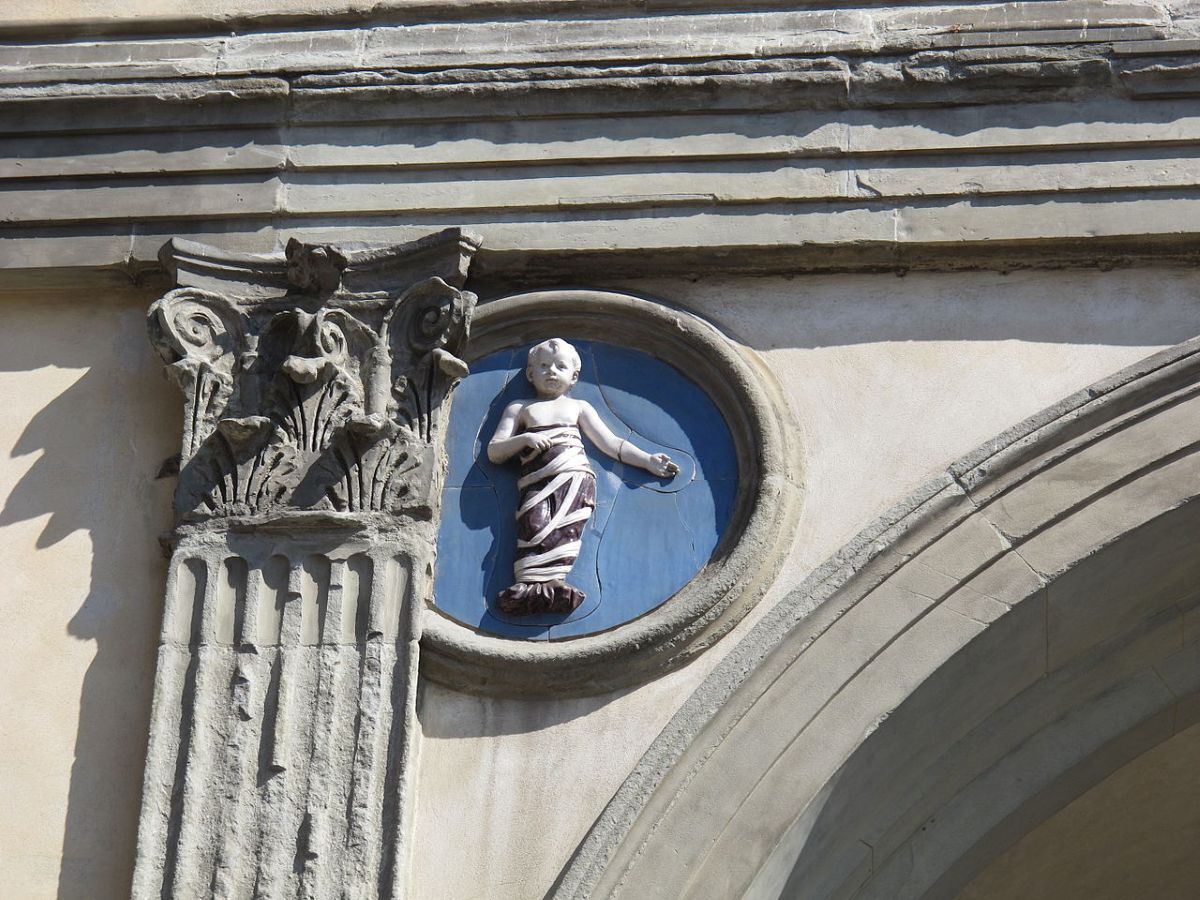Hospital of the Innocents, Florence, Italy
Hospital of the Innocents, Florence, Italy
In Florence, Italy stands an architectural masterpiece Ospedale degli Innocenti (The Hospital of the Innocents) created by Filippo Brunelleschi who designed the iconic symbol of Florence – The Duomo of Cathedral of Santa Maria del Fiore. Visiting Florence, one would assume this majestic building must be a palace or a religious institution, however the purpose of this building was a lot less grand. It served as a “hospital” for abandoned children in Florence. Today, we tend to think of hospitals as strictly medical facilities, but during The Renaissance their functions were much broader: these charitable organizations provided a range of physical and spiritual assistance—including food, clothing, and housing—to pilgrims, the poor, and the sick. Opened in 1445, the Innocenti was one of the first institutions in Europe dedicated specifically to the care of abandoned children.
In the 1400’s Florence had a baby problem. Babies were being abandoned everywhere. During this time, it was common practice for unwanted children, especially girls, to be abandoned. Children were abandoned for many reasons including illegitimacy, poverty and plague. Fortunate children were left in churches, but many others were left exposed to the elements or drown. The city needed a solution to care for these children.
The Renaissance idea of “Humanism”, characterized by the focus on human potential and dignity, led to renewed interest in social welfare and the idea of providing more comprehensive care for the poor, including work and education. The wealthy felt it was their Christian duty to care for the less fortunate. The Arte della Seta” or Silk Guild of Florence claimed responsibility for these abandoned children and quickly decided to construct a large hospital to care for these orphans. With a sizeable donation from a Merchant from Prato, Francesco Datini, construction began. In 1419, Filippo Brunelleschi who, at the time, was also building the dome of the Cathedral in Florence was hired to design and build this building. The Ospedale degli Innocenti opened on January 26, 1445 and ten days later Agata Smeralda was the first child admitted.

Originally, a woman would deposit her baby in a “pila” a type of font located along the loggia – the exterior covered outside gallery. Starting in the 17th century, a special turnstile door was constructed in the Hospital wall so parents could leave their child without being seen. Only very small babies could fit into this opening. A statue of the Virgin Mary with a pointed finger marked the spot where the secret door was located. The child would be put within the door and the woman would spin the turnstile, the baby would then proceed down a small chute where they would fall into the “basin of abandonment”. On either side of the basin were statues of the Virgin Mary and St. Joseph who watched over the basin protecting the baby until the staff collected the child. The mothers of the abandoned babies often left half an item such as a coin attached to a necklace and placed around the child’s neck with the hope that someday the mother would be able to return and reclaim her child.
Once the staff collected the baby, they were immediately taken to a wet nurse to be fed. Then the child would be entrusted to an in-house nanny, usually poor single girls or mothers of children who had been taken in by the Hospital itself. External nannies were also utilized. Wherever possible, children were taken to live in the countryside with country wet nurses where the climate was much more favourable for the health of the growing child. They would stay with the country wet nurse until they were about five years old.
Those who were able to survive infant mortality which was extremely high at the time were then returned to the Hospital. Boys would be taught a trade, and girls would learn domestic work and weaving so they would be hireable to the wealthy families of Florence and would be able to earn dowries which would enable them to marry or enter a nunnery.
Over more than 500 years, the Ospedale degli Innocenti cared for over 375,000 children. Today the building houses a small museum of Renaissance art and continues to help care for abandoned children today.

Importance in Renaissance Art & Architecture
The famous loggia – covered outdoor gallery surrounded by arches and columns - designed by the architect Filippo Brunelleschi, served as an important threshold and point of communication between Ospedale degli Innocenti and the city of Florence. Typical of Renaissance architecture, Brunelleschi copied elements from Classical Roman architecture such as round spring arches and Corinthian columns arranged in a symmetrical fashion which evokes a sense of order and stability, an important feature in a hospital for foundlings.
Brunelleschi designed roundels at the top of the loggia. In 1487, Andrea della Robbia was commissioned to fill the loggia’s roundels with colorful works of art. The original payment record described these works as bambini di terra (“babies made of clay”). These brightly colored high-relief glazed terracotta sculptures, a signature design of Della Robbia family workshop, adorned the exterior loggia. The Della Robbia sculptures depict infants in swaddling clothing letting everyone in Florence know the purpose of this hospital.
Ever since these sculptures were installed over 500 years ago, the Della Robbia sculptures have become a widely recognized symbol of the Hospital of the Innocents and of childhood itself. Hospital and schools around the world are decorating with Della Robbia type Infanti sculptures including the Lying-In Hospital in Boston and one serves as the seal of the American Academy of Pediatrics.







